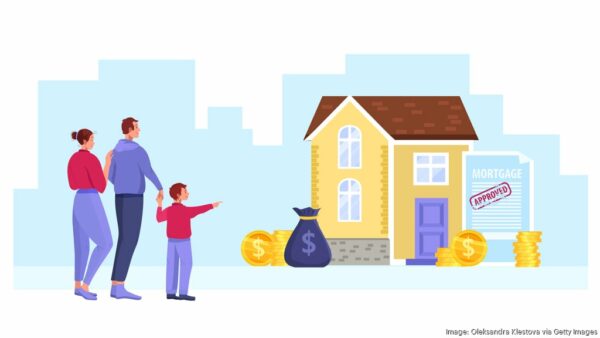What is Refinancing?
Mortgage refinancing is a financial strategy that allows homeowners to replace their existing mortgage with a new, more favorable loan. Many homeowners choose this route to save themselves money in the long-run. Refinancing can result in homeowners obtaining more favorable terms, reducing monthly payments, obtaining lower interest-rates, and achieving other financial goals related to their home. Homeowners typically consider refinancing when interest rates fall and economic conditions prove better than they were at the time of the last mortgage closing. To understand current mortgage rates in Utah better visit the Utah Mortgage Rate Calculator page. Other reasons for refinancing may be due to positive changes in credit profiles, to change the duration of the loan, or to switch to a different type of loan.
Refinancing Your Mortgage
The decision to refinance a mortgage is driven by various factors. These include the desire to secure a lower interest rate, reduce monthly payments, or access the equity built in the home. Reasons to refinance can also encompass debt consolidation, adjusting the loan term, or switching from an adjustable-rate mortgage to a fixed-rate one for stability. Whether motivated by financial savings, improved loan terms, or changing financial circumstances, mortgage and refinance options offer homeowners valuable opportunities to enhance their financial well-being. To better understand the best direction is for you, visit our 30 year vs 15 year Mortgage Loans page.

How to Refinance? The Refinancing Process
Here are the 5 steps to follow in your process of refinancing your home:
- Preparing and Applying to Refinance
- When applying to refinance you will need the same paperwork you provided when you originally mortgage your home: pay stubs, W-2s, bank statements, tax returns. You will also need your spouse’s documents if you are married and in a community property state.
- Choosing your Refinance Interest Rate Type
- After you get approved, you have two options for your interest rate: lock it in or float your rate. When you lock your interest rate you are guaranteed to have the same interest rate no matter if the rates rise after you lock. However this also means that the mortgage rates lower you are stuck at that higher initial rate. The best way to make this decision is to watch the markets and look at future predictions. If you go with a floating interest rate your rate will depend on the market conditions and have the possibility of going up or down.
- Getting Approved
- Behind the application process, a lender will evaluate your credit history, look at your debt-to-income ratio, verify your down payment and savings. They can also order an appraisal heading into the next step.
- Getting a Home Appraisal
- Your lender will order an appraisal on your home. All you will have to do is make sure that your house looks amazing for the appraisal.
- Closing Your New Home Loan
- Once you have completed all the previous steps, it is time to close on your loan. During this stage, you will go over your details and sign them to make them official. There is usually a 3-day grace period for you to change your mind if something comes up.
For more details about the Refinancing process check out Rocket Mortgages Refinancing Steps.
Reasons to Refinance
Refinancing can be a smart financial move for various reasons including:
- Getting a Lower Interest Rates: One of the primary reasons homeowners refinance is to secure a lower interest rate for their existing loan. By doing so, they can decrease their monthly mortgage payments and potentially save thousands of dollars over the life of the loan.
- Reducing Monthly Payments: Refinancing can extend the time you have to pay your loan, resulting in lower monthly payments. This can free up cash for other expenses or investments monthly
- Accessing Home Equity: Homeowners with substantial home equity can tap into it through a cash-out refinance. This allows you to borrow against your home’s value and use the funds for major expenses like home improvements, debt consolidation, or education. Learn more about it down below.
- Changing Loan Types: Some homeowners opt to change their loan type, such as moving from an adjustable-rate mortgage (ARM) to a fixed-rate mortgage. This is to secure stability and predictability in their monthly payments.

Cash-Out Refinance
A cash-out refinance is a type of mortgage refinance where the homeowner uses the equity of the home and exchanges a larger mortgage rate for cash. The existing loan amount is increased allowing for the difference to be received in cash by the hom eowner. Both refinancing and cash-out refinancing involve replacing the existing mortgage with a new one but the purposes differ for each. Cash-outs are commonly used for financial investments, home renovations, paying off student loans, debt consolidation, or unexpected expenses. A positive outcome of a cash-out is it uses built up equity and provides cash for one to use. A negative outcome of a cash-out is it increases the total loan balance and mortgage payments. To learn more about cash-out refinancing and if it is right for you, visit our Cash Out Refinance page.
Understanding Refinance Rates
Refinance rates are important in the decision-making process when considering refinancing your home. Refinancing rates can impact your monthly interest rates and the total expense of the loan. The factors that determine refinancing rate are current market conditions, credit score, loan to value ratio, debt to income ratio, and more. If current rates are lower than your original home loan rate, refinancing could save you money in the long term. Online calculators and tools can be used to compare rates that suit your specific needs. Our Mortgage Rate Calculator can help in your decision-making process
Calculating Costs to Refinance
Let’s talk about the costs to refinance a home loan. When you decide to refinance your mortgage loan, it’s like giving your mortgage a facelift. But, much like a makeover, it comes with a price tag. This includes various fees such as application fees, appraisal fees (to determine your home’s value), and potentially some closing costs (like attorney fees and title insurance). It’s crucial to consider that while refinancing your home mortgage. It has the potential to save you money in the long run but you’ll need to take these upfront costs into account. Before you begin the refinancing process, it’s important to do some calculations to ensure that the savings outweigh the costs. Using a reliable tool and researching can provide you with a clearer picture of whether refinancing is the right decision for you.
Refinancing in Summary
In short, refinancing is a process that replaces an existing mortgage on a property with a newer mortgage, that typically benefits the owner of the mortgage. When you obtain a new mortgage, you often lower your interest rate or change your loan terms. Many also choose to cash-out refinance to tap into their home equity.
For more information on how refinancing works and types of refinancing visit the Investopedia Refinancing page.


